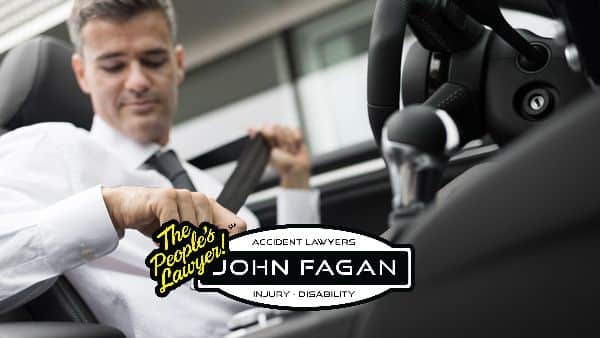Unrestrained rear-seat occupants were nearly 8 times as likely to sustain a serious injury in a crash as restrained rear-seat occupants. (Photo: Shutterstock)
Most drivers wouldn’t dare hit the road without putting their seatbelts on.
Drivers who don’t buckle up and who don’t require their passengers to buckle up could fall from the good graces of their auto insurance carrier.
To have a low premium, carriers are looking for consistent, low-risk customers. Tickets, along with the hefty financial penalties, could indicate a more risk-prone driver, which could lead to higher rates and premiums.
Related: Crash test: An inside look at the Insurance Institute for Highway Safety
Drivers often encounter signs and ad campaigns that remind them of the numerous risks they face if they don’t use their seatbelt — “Buckle Up It’s The Law” and “Click It Or Ticket” are some of the more familiar ones. Much of the focus, however, has been targeted toward the driver and the front-seat passenger.
Unrestrained back seat passengers pose risk to all vehicle occupants
What about those in the back seat? According to the Insurance Institute for Highway Safety (IIHS), many rear-seat passengers don’t think seatbelts are necessary because they perceive the back to be safer than the front.
[embedded content](Source: YouTube)
A study by IIHS and The Children’s Hospital of Philadelphia published in Accident Analysis and Prevention in 2015 found no difference in the risk of dying in a crash when seated in the rear compared to the front seat for restrained occupants ages 13 to 54 in model 2000 and newer passenger vehicles. Unrestrained rear-seat occupants were nearly 8 times as likely to sustain a serious injury in a crash as restrained rear-seat occupants.
“For most adults, it is still as safe to ride in the back seat as the front seat, but not if you aren’t buckled up,” says Jessica Jermakian, an IIHS senior research engineer and a co-author of the study. “That applies to riding in an Uber, Lyft or other hired vehicle, too.”
Seatbelt usage is down in hired vehicles compared to personal vehicles. (Photo: Shutterstock)
Who isn’t belting up?
Adults aged 35 to 54 were the least likely group to report always buckling up in the back seat. Of this group, 66% reported always using a seatbelt in back, compared with 76% of adults 55 and older and 73% of adults 18 to 34.
Related: You just got a moving violation ticket. Now what?
Women were more likely than men to report always using a seatbelt in the rear seat, and adults who had attended college were more likely to buckle up than adults with less education. These findings are in line with prior surveys of seatbelt use.
People who said that most of their trips as a rear-seat passenger were in hired vehicles — that is, taxis, limos or ridesharing vehicles, for example — were more likely to report not always using their safety belt than passengers in personal vehicles. In the survey, 57% of passengers in hired vehicles reported always using their seatbelt in the rear seat, compared with 74% of passengers in personal vehicles.
Audible reminders, stricter law enforcement and user-friendly seatbelts are a few ways to change seatbelt culture. (Photo: Shutterstock)
Changing seatbelt culture
Nearly two-thirds of part-time safety belt users and nonusers said audible rear-seatbelt reminders would make them more likely to buckle up. IIHS studies have shown that driver seatbelt use is higher and fatality rates are lower in vehicles with enhanced belt reminders than in vehicles without them. However, fewer vehicles come equipped with belt reminders these days.
Related: Insurers, actuaries and the future of automated vehicles
Nearly 40% of people surveyed said they sometimes don’t buckle up in the rear seat because there is no law requiring it. Except for New Hampshire, all states and the District of Columbia require adults in the front seat to use seatbelts. All rear-seat passengers are covered by laws in 29 states and D.C. Of these laws, 20 carry primary enforcement, meaning a police officer can stop a driver solely for a seatbelt-law violation.
Aside from stronger seatbelt laws, more than half of part-time seatbelt users and nonusers said more comfortable seatbelts would make them more likely to buckle up in the rear seat. Softer or padded belts, plus shoulder belts that are adjustable so they don’t rub the neck, are in demand.
In a perfect world, everyone will use their seatbeat, no matter where they’re sitting. Until then, drivers can set a good example by buckling their safety belt and reminding any other passengers to do the same.






